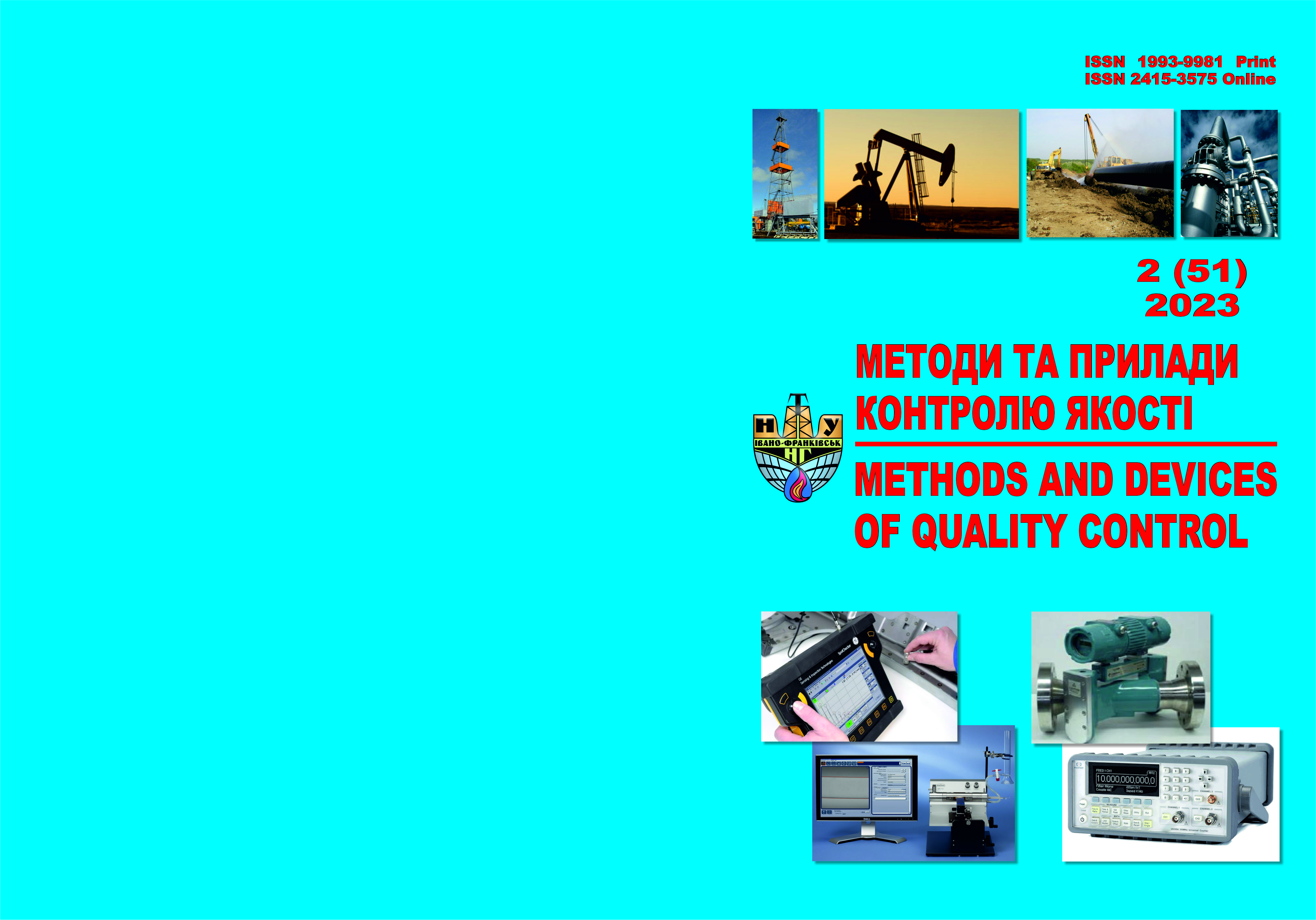МЕТОД КОНТРОЛЮ КАВІТАЦІЙНИХ ХАРАКТЕРИСТИК СВЕРДЛОВИННОГО СТРУМИННОГО НАСОСА
DOI:
https://doi.org/10.31471/1993-9981-2023-2(51)-72-80Ключові слова:
струминний насос, ежекційна система, контроль параметрів, кавітація, неперервність потоку, обертання потоку, траєкторя струменяАнотація
Робочий процес струминного насоса відзначається підвищеною імовірністю виникнення кавітації в його проточній частині, що суттєво знижує ефективність та обмежує поширення нафтогазових ежекційних технологій. На основі використання рівняння збереження енергії та неперервності потоку розроблена методика визначення граничних експлуатаційних параметрів свердловинного струминного насоса, які відповідають безкавітаційній роботі ежекційної системи за умови відносного обертання робочого середовища. Розрахункова схема напірної ежекційної системи представлена лінійними гідравлічними опорами бурильної колони і затрубного простору та місцевими опорами у вигляді робочої насадки струминного насоса і промивальних насадок долота. Використовуючи систему рівнянь Бернуллі записаних для характерних перерізів ежекційної системи встановлена відповідність між мінімальним значенням тиску в проточній частині струминного насоса, глибиною свердловини, витратою робочого потоку та діаметром робочої насадки. Відносне обертання змішуваних потоків враховано за допомогою коефіцієнта стиснення робочого струменя, величина якого залежить від параметрів циркуляційного руху змішуваних потоків. Мінімальне значення тиску в проточній частині струминного насоса прямопропорційно залежить від глибини свердловини і витрати робочого потоку та оберенопропорційно – від діаметра робочої насадки. Кавітаційна характеристика ежекційної системи представлена у вигляді залежності граничних експлуатаційних параметрів від величини кута нахилу встановлених в проточній частині струминного насоса направляючих елементів. При збільшенні кута нахилу направляючих елементів мінімальний діаметр робочої насадки струминного насоса зростає. Залежності максимально допустимої витрати робочого потоку та мінімально допустимої глибини розміщення насоса в свердловині відзначаються екстремальною нелінійною залежністю від кута нахилу направляючих елементів.
Завантаження
Посилання
Muster S., Clark C. Rethink Artificial Lift with Hydraulic Pumping Systems. Diverse Energy Systems. 2016. Vol. 3. 12 p. Number Paper LIB145588. http://www.flowfastjetpumps.com/documents/Rethink-ArtflLift_whitepaper.pdf.
Samad A., Nizamuddin M. Flow Analyses Inside Jet Pumps Used for Oil Wells. International Journal of Fluid Machinery and Systems. 2013. Vol. 6. Issue 1. 10 p. http://dx.doi.org/ 10.5293/IJFMS.2012.6.1.001.
Long X., Zhang J., Wang Q., Xiao L., Xu M., Lyu Q., Ji B. Experimental investigation on the performance of jet pump cavitation reactor at different area ratios. Experimental Thermal and Fluid Science. 2016. Vol. 78. P. 309–321. https://doi.org/10.1016/j.expthermflusci.2016.06.018.
Cunningham R. G., Hansen, A. G., Na T. Y. Jet Pump Cavitation. Journal of Basic Engineering. 1970. Р.483–492.
Gan J., Wang Y., Wang D., Zhang K. Research on the Law of Head Loss of Jet Pumps in the Cavitation State. ACS Omega. 2022. Vol. 7. Issue 15. P. 12661−12679. https://doi.org/10.1021/acsomega.1c06895.
Yunzhi L., Jiong W., Zuti Z., Bin J., Huaiyu C., Shuangjie X., Xinping L. Experimental research on supercavitation in jet pump cavitation reactors for zero flow-ratio conditions. Physics of Fluids. 2023. Vol. 35. Issue 7. 15 p. https://doi.org/10.1063/5.0157802.
Cho Y., Shrestha U. Cavitation Performance Improvement of an Annular Jet Pump by J-Groove. The KSFM Journal of Fluid Machinery. 2020. Vol. 23. No. 4. P.25−35. https://doi.org/10.5293/kfma.2020.23.4.025.
Yakimechko Ya.Ya., Zaitsev O.M., Chudyk І.І., Fem’yak Ya.M., Fedyk O.M. Udoskonalennya tekhnologіi vydobuvannya visokov’yazkykh naft struminnymy nasosamy z vykoristannyam kavіtatsіinikh protsesіv : monografіya. Drogobich: Posvіt, 2022. 140 s.
Panevnyk D.O. Vikoristannya metodu konformnykh vіdobrazhen dlya kontrolyu kavіtatsіinikh kharakterustuk struminnogo nasosa. Metodi ta priladi kontrolyu yakostі. 2022. № 1 (48). S. 18–26. https://doi.org/10.31471/1993-9981-2022-1(48)-18-26. [in Ukrsinian]
Panevnyk D.O. Matematichna model kontrolyu kіnematichnykh parametrіv zmіshuvanikh po-tokіv pri obertannі sverdlovinnoji yezhektsіinoyi systemy. Metodi ta priladi kontrolyu yakostі. 2022. № 2 (49). S. 95–102. https://doi.org/10.31471/1993-9981-2022-2(49)-95-102. [in Ukrainian]


.png)




